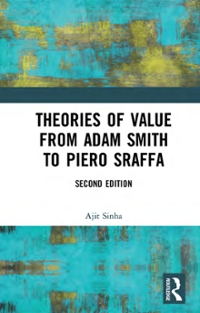Question
just need f, g and h iI already have the other answered Suppose we have the following production function: Q = K3/4L1/4. Confirm the technology
just need f, g and h iI already have the other answered
Suppose we have the following production function: Q = K3/4L1/4. Confirm the technology is constant returns to scale (CRS). Show your work and explain what it means. (1 points) (b) Now suppose K is fixed in the short-run at 21.544 (so that K3/4 = 10). Let r = $10 and w = $20. What is the firm's cost minimization problem? Explain. (3 points) (c) Derive the short-run cost function. Show that short-run costs are increasing in Q and that average variable and marginal costs also rise as Q rises. You can use math or a table/figure to do this. (1 points) (d) Suppose P = $100. What is the firm's profit maximization problem? (3 points) (e) Show that optimal Q = 23.20 in the short-run. You can use math or a spreadsheet. Also show costs, revenues, and profits. Should the firm simple choose Q = 0 and shut-down? (4 points) (f) Now let both K and L be variable. What is the firm's long-run cost minimization problem now? What two conditions must be met to ensure the firm is minimizing costs. Explain and use a diagram. (2 points) (g) We can show that the MRTS = -3 L/K. What is the MRTS measuring and why does it change along the isoquant? (4 points) (h) Let r = $10 and w = $20. Find the long-run cost function (C = wL + rK). Show that average and marginal costs are constant (eg the same value for any Q). Why is this the case?
ANSWERS I HAVE AT THE MOMENT
a)
Constant Returns to Scale (CRS) means that if we scale the inputs by, the output also gets scaled by a factor of. For example, if we double the amount of capital and labor, the output will also double if technology follows CRS.
So
Therefore, the technology satisfies Constant Returns to scale.
b)in the short run. Therefore, in the short run, the output will vary with labor only such that:
The cost minimization problem in the short run would involve choosing Labor such that we minimize cost subject to producing the required output. The minimum cost problem of producing "Q" units of output is stated as:
Equivalently,
c) It is clear from the constraint as above in part (b), thatwill be required to produce "Q" units of output.
Therefore the cost function is given by:
The costs are increasing in Q. For this look at C'(Q) and note that it is positive:
Now also see that the Marginal Cost is essentially the derivative of the cost function. That is,
Now to see that Marginal Cost function is increasing in Q, we look at the derivative and see that it is positive:
Given the cost function as above, variable costs are given by:
Therefore, Average Variable Cost is given by:
Now note that AVC is also increasing in Q. Look at AVC'(Q) and see that it is positive:
d)
The profit maximization problem is to choose Q to maximize total profits. The price is given to be $100:
e)
The FIrst Order Condition: set the derivative equal to 0 -
Revenue = 100*Q = $232
Total Cost =
Total Profit = 232 - 794.84 = -$562.84
The short run shut down condition is given by:
So, we need to check the Average Variable Cost at Q = 23.20.
Note that the p = 100 > 24.97, therefore in the short run, the firm should not shut down.
Step by Step Solution
There are 3 Steps involved in it
Step: 1

Get Instant Access to Expert-Tailored Solutions
See step-by-step solutions with expert insights and AI powered tools for academic success
Step: 2

Step: 3

Ace Your Homework with AI
Get the answers you need in no time with our AI-driven, step-by-step assistance
Get Started


